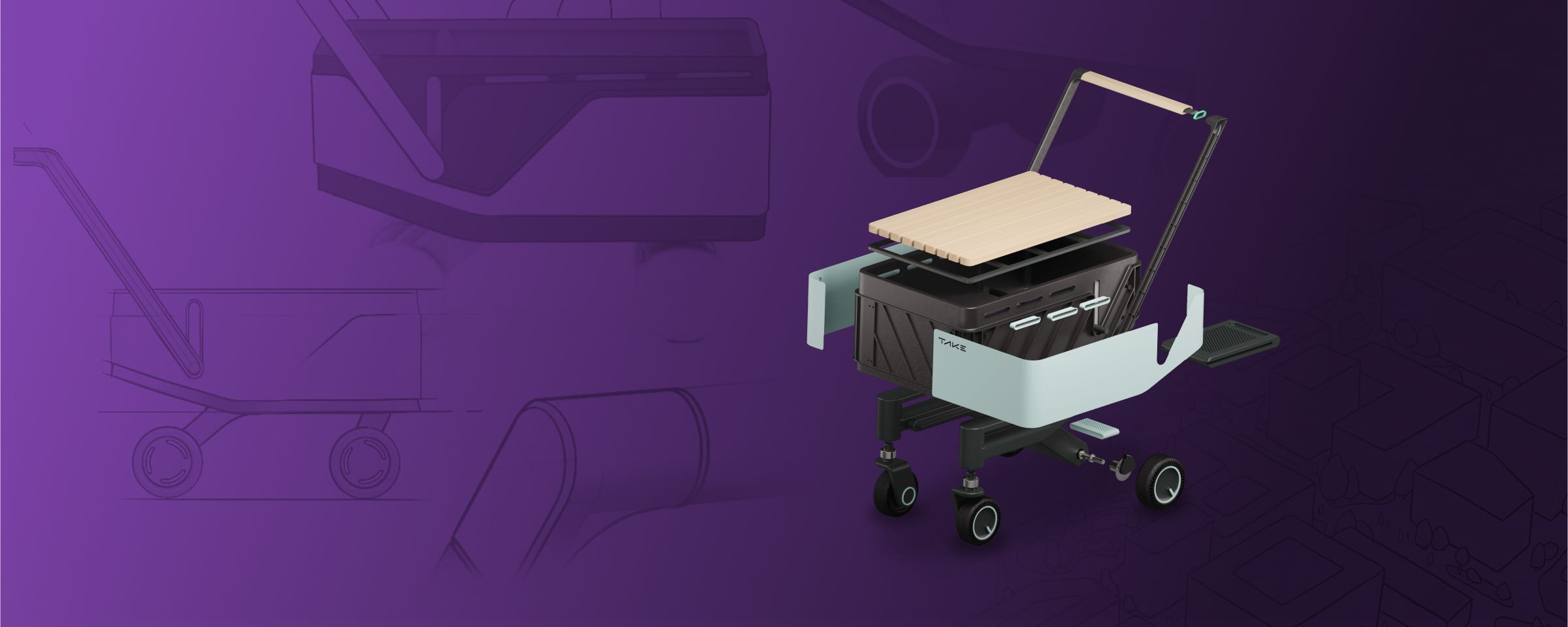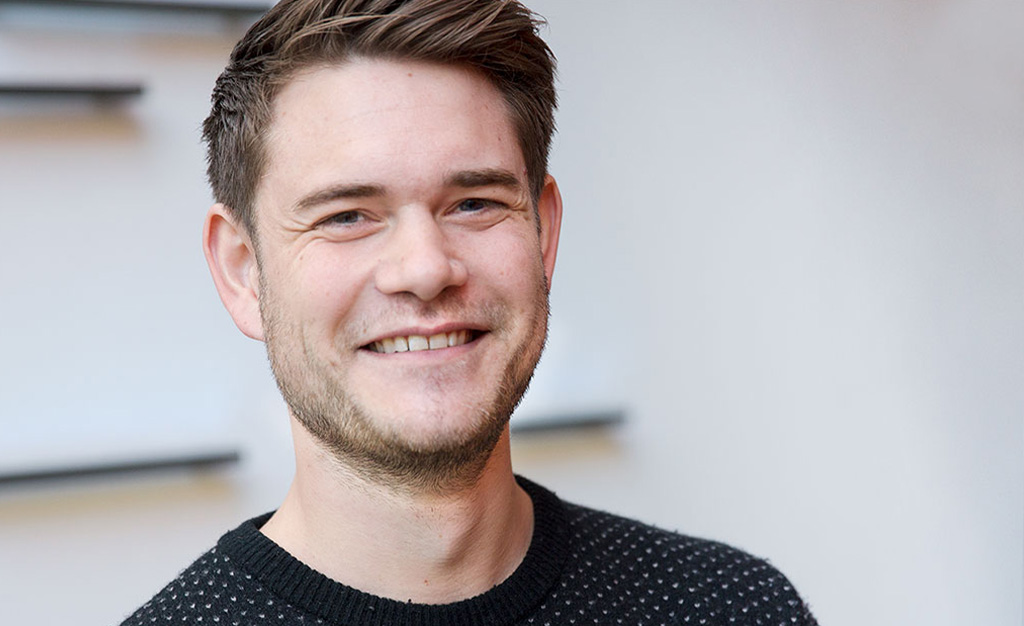Services
Industries
About us

TAKE – A sustainable vision for smart products
„We shape our tools and thereafter our tools shape us.”
This quote from John Culkin emphasizes the interrelation between innovations and their social impact. This is particularly evident in urban living areas.
This case study shows how we are turning urban challenges into opportunities for positive change and business success. Our holistic approach combines economic growth, environmental sustainability, and social well-being - factors essential to forward-thinking businesses.
The market trend
Cities around the world are becoming more pedestrian-friendly – with more green spaces and less traffic. The so-called “superblocks” are leading the way – urban districts that limit motorized traffic in favor of pedestrians and cyclists. This shift is creating cleaner air, stronger communities and new markets for innovative mobility solutions.
Five facts about the importance of quality of stay in cities
- vibrancy and social interaction are main reasons for visiting cities (Gehl, “Cities for People”, 2010)
- pedestrians and cyclists spend more money in local shops than motorists (Transportation Alternatives, NYC, 2012)
- improved pedestrian infrastructure increases retail sales (Transportation Alternatives, NYC, 2012)
- quality of stay increases urban attractiveness more than parking supply (Gehl, 2010)
- pedestrian-friendly design promotes social interactions and city life (Gehl, 2010)
Innovation potential & market gap
These new urban spaces with a higher quality of life also present a new challenge: the transportation of things without direct car access. From weekly groceries to bulky waste - there is potential here for smart product solutions that facilitate and enrich community life.
Our innovative, human-centred approach
We asked ourselves the question: How can companies benefit from this change while making a meaningful contribution to liveable cities? Our approach: the reinterpretation of the classic hand wagon as a community-enhancing concept.
Let's explore together how this seemingly simple product can noticeably improve daily life in our cities:
User Journey — Mia's life in the Superblock
Mia strolls through the lively streets of her superblock. “How different it is here,” she thinks as she looks at the green squares and renaturalized areas. She feels the pleasant breeze and the improved microclimate “It feels like the city has finally come to life”, she whispers as she watches people sitting in cozy cafes and passersby strolling by. With a freshly brewed cappuccino in her hand, Mia enjoys the morning atmosphere on her way to work.
Multimodal mobility of the future
“I'm going to use the car sharing service today” Mia thinks as she arrives at the Mobility Hub. “The family party is coming up, so I need to do some grocery shopping.” She steps into the borrowed car and sets off for work, with the supermarket visit in mind.
How do I transport the groceries?
After work, Mia stands in front of the Mobility Hub, surrounded by shopping bags and a heavy crate of drinks. "Oh dear, how am I going to get all this home?" she asks herself. "Ten mintues to walk... How will I carry all this?"
Take a TAKE!
Mia's gaze lands on the TAKE wagons. Perfect!"_ she thinks. The wagons are ready for use anywhere in the Superblock to provide convenient transportation without the need for a car.
„Take is a solution to the transportation problem in car-free districts. A hand wagon – an old product – but reimagined to create added value for the environment and society.”
…and this is how the transport aid works
Mia can now easily transport her groceries. The wagon is quickly unlocked and folded from the parking position to transport mode. Thanks to the integrated electric motor, the power required to push or pull the wagon is automatically assisted. This feature is particularly useful for elderly or disabled people and makes the service attractive in hilly cities.
Transformation into urban furniture
TAKE also has a use after transportation. As mobile urban furniture - with the aim to encourage spending time outside the quality of stay and interpersonal encounters.
Circularity as a guiding principle
The seat panels are made from recycled old oak. This renewable raw material ensures a comfortable seating experience, short delivery routes, and low resource consumption. The main body of the wagon is made of recycled polypropylene. Due to its good recyclability and established processing infrastructure, the material is known as a exceptionally sustainable plastic variant.
Durability and reparability
Due to their recyclability, components should preferably be used for as long as possible before they are quickly returned to the ecological or technical material cycle. Repair and remanufacturing are almost always preferable from an ecological perspective due to the lower energy input. The use of anodized aluminum castings in the load-bearing structure and the cladding made of powder-coated sheet metal in the cladding ensures the appropriate longevity in daily use.
A business model with tomorrow in mind
The concept must also be economically sustainable for it to become a reality. The system is based on a sharing business model. The carts are maintained and repaired on-site. The regulations for use in public spaces are defined in consultation with the city administration and in cooperation with the residents of the Superblock. In the background stands the Take Services GmbH, which supports the local branches with IT infrastructure and coordinates the production and repair of the carts.
Sustainability and growth: an inspiring vision for the future
The perceived conflict between sustainability and economic growth is a challenge for many companies. Production processes always require resources and energy, making it difficult to achieve all encompassing sustainability. Becoming more sustainable often means simply reducing negative impacts. This approach is often associated with additional costs, effort and restrictions - a less than motivating perspective that can even question the justification for companies to exist. However, the shift to sustainability also offers opportunities for innovation and repositioning that must be embraced.
„But what happens when companies reframe their purpose?”
Instead of appearing as a "manufacturer of hand wagons", a company like Take could position itself as an "enabler for green inner cities" This reorientation would offer employees and partners an inspiring goal: actively making a positive difference. Business activities and innovations would then be targeted towards environmental and social improvements, which would increase motivation and open up new market opportunities.
At best, a product alone can only be "less bad"; only as part of a system a product can have a real sustainable effect. Economic growth would not only be aimed at, but would also be closely linked to succeeding in improving and restoring the environment.
Our concept study demonstrates how this perceived conflict between economic growth and sustainable action can be meaningfully resolved. In a time of change, this new perspective offers an inspiring vision for a better future - a vision in which economic success and environmental responsibility go hand in hand..
Let's go for it!

„For Intuity, sustainable innovation is about more than minimizing negative impacts; it is about designing solutions that enable a better future. As one of Europe's leading innovation studios, we develop solutions that align business success with sustainable development goals.”
Are you interested in an exchange of ideas on sustainability and product innovation?